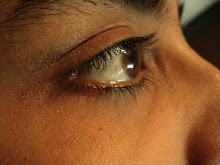Thursday, 9 May 2013
My article on Tsutomu Yamaguchi ... So that it doesn't get lost in time
Would you call him the luckiest or unluckiest man alive?
(Published in Mail Today on 23 August 2009)
Tsutomu Yamaguchi, who miraculously survived despite being at ground zero in Hiroshima and Nagasaki when US bombers used atom bombs in August 1945, does not know the answer to this question. But what he does know, and repeatedly acknowledges, is that fate had a plan for him.
At 93, Yamaguchi’s battle with cancer, probably caused by exposure to radiation sixty-four years ago, has become a way of life. Recuperating in a hospital where he was admitted on August 8 this year, he said he spent every anniversary of the two “fateful days” praying. “This has been like the 128th anniversary in these 64 years,” he told Mail Today.
In March, he became the first person to be officially recognised as a nijuu hibakusha — a dual A-bomb survivor.
The recognition comes towards the end of a life of bitterness, a constant effort to water down the blow dealt by fate, and a late reconciliation with the role he could play in ending war and nuclear proliferation.
After all, one does not often meet a person who has been through hell twice, within the space of just three days. Yamaguchi survived while more than two lakh people around him succumbed.
In August 1945, Yamaguchi was a 29-year-old shipbuilding engineer with Mitsubishi Heavy Industries. A resident of Nagasaki, he was in Hiroshima on a three-month assignment. He and two other colleagues were scheduled to return to home on August 7. Destiny had other plans.
On August 6, Yamaguchi was on his way to the shipyard a little after 8 am when he heard the familiar drone of a B-29 bomber. In wartime Japan, this was a noise one grew used to. But what happened next was unprecedented.
“The ground was filled with a white light that sparked midair and I saw a ballooning giant fireball,” he wrote in his autobiography published in 2007. “I saw a pillar of cloud growing high above the sky in the shape of a mushroom.”
At least 90,000 people were killed that day in Hiroshima. Yamaguchi partially lost his hearing and suffered burns. But what affected him most was what he saw around him.
“The river that till yesterday had reflected peace was now filled with bodies clumped together… The river kept flowing yesterday and today. But a single bomb forever divided them into completely unrelated days,” he wrote.
After spending a fitful night in Hiroshima, he managed to return to Nagasaki on August 8, almost as if to keep his date with fate.
On August 9, he went to work and tried convincing his manager that one single bomb had destroyed an entire city. Even as he was being called a madman by his disbelieving superior, the atom bomb dropped over Nagasaki, about three kilometers from where they stood.
“The same mushroom cloud I saw in Hiroshima was growing tall as if to sneer at me,” he wrote years later.
Five feet in diameter, 11 feet in length and over 9,000 pounds in weight, the bomb called Fat Man killed nearly 70,000 people in Nagasaki that day.
Even after all these years, the images of destruction and pain he saw refuse to leave Yamaguchi. “I remember the pain in my body. I saw people evaporate like mist, people lying on the street burnt to charcoal, barely recognisable as human bodies,” he told Mail Today.
The bitterness towards the Americans caused by the experience still finds voice in him. “I cannot forgive them because this hell is a result of a well-planned attack,” he said.
Despite the anger, Yamaguchi did not participate in anti-war activities. Nor did he make it a point to get official recognition of his status as a dual survivor.
He carried on with life, taking up a job as an English interpreter with the US Navy and later as an English teacher in a Japanese school. A few years later, he returned to his job as an engineer.
But his family’s constant struggle with illnesses and the effects of exposure to radiation prompted Yamaguchi to come out of his shell. When his son died of cancer in 2005, he felt the need to voice his anguish and tell the world about what millions of A-bomb had gone through.
Yamaguchi finally penned an autobiography in his eighties. He was also featured in a 2006 documentary Nijuu Hibaku. He attended a screening of the film at the United Nations, where he urged the audience to fight for the abolition of nuclear weapons. “As a double atomic bomb survivor I experienced the bomb twice and I sincerely hope there will not be a third," he had said.
For Yamaguchi, the official recognition as a nijuu hibakusha on March 24 this year was a hope for the future. “My double radiation exposure is now an official government record. It can tell the younger generation the horrifying history of the atomic bombings even after I die,” he told a local newspaper.
Asked what he would most like to change about his life, Yamaguchi’s answer was simple and direct — “Everything on wars.”
Yamaguchi’s faith in the Buddhist concept of insei mijyou (the impermanence of everything) kept him going as the pain of his past threatened to consume him.
Now, finally at peace with what fate had in store for him, Yamaguchi made an example of his life. “Life or death, there are only two choices for human beings. I wish young people choose life as their purpose,” he signed off, hinting that hope too may have survived Hiroshima and Nagasaki.
Subscribe to:
Post Comments (Atom)

No comments:
Post a Comment